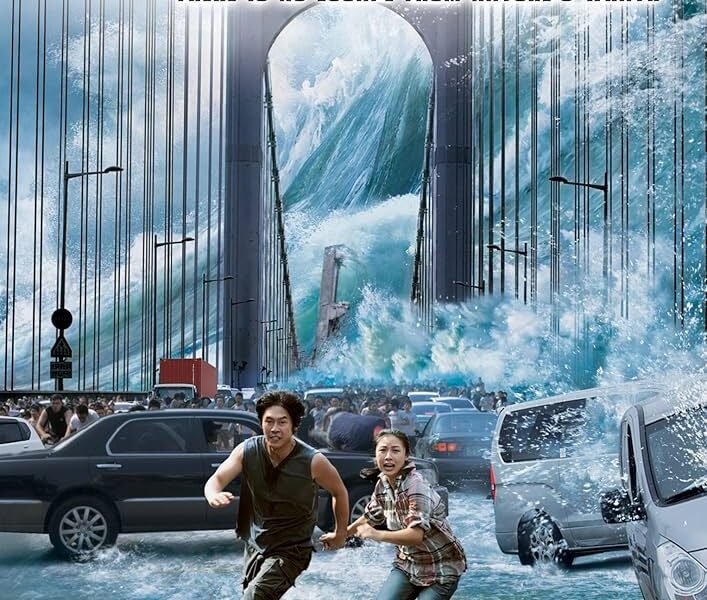1. Plot Summary
On Haeundae Beach—a bustling resort packed with over a million vacationers—a marine geologist named Kim Hwi detects seismic activity suggesting a colossal tsunami is incoming. As he races against disbelief from authorities, intertwined personal stories unfold: Man-sik grapples with past tragedy and a proposal to his longtime partner, while other characters face personal and emotional crossroads. When the tsunami strikes at over 500 mph, lives are upended in a devastating test of survival and sacrifice.
2. Notable Elements
-
Cinematography & Visual Effects: Cinematographer Kim Young-ho won multiple awards for his work on this film, delivering visually sweeping scenes of destruction and chaos. The tsunami sequences—featuring collapsing bridges and toppling skyscrapers—stand out as gripping set pieces.
-
Ensemble Cast: Sol Kyung-gu and Ha Ji-won lend emotional weight to their roles, while Park Joong-hoon’s earnest performance as Kim Hwi grounds the disaster in human urgency.
-
Emotional Stakes: The personal backstories—from romance to paternal reconnection—raise the emotional stakes and make the catastrophe feel deeply human.
-
Scale & Spectacle: As South Korea’s first major disaster movie, it was a visual milestone in Korean cinema, drawing over 10 million viewers and earning a Best Special Effects award.
3. Themes and Messages
-
Nature’s Unpredictability: The film emphasizes how swiftly life can shift from routine joy to raw survival when nature unleashes its power.
-
Guilt, Redemption, and Family: Characters are bound by emotional baggage and relationships—seeking reconciliation, proposing new beginnings, or rekindling lost connections just as disaster strikes.
-
Heroism Amid Chaos: Moments of sacrifice—from selfless rescues to ultimate loss—highlight courage under unimaginable stress.
These themes echo the emotional poignancy often found in holiday narratives, although here they’re framed through heartbreak, resilience, and communal rebuilding in the face of disaster.Advertisement
4. Personal Impressions
Strengths:
-
Its ambitious scale and practical-stunt-enhanced CGI deliver tense, adrenaline-fueled sequences.
-
Deeply human moments—like personal reunions—provide emotional anchors amid cinematic chaos.
-
A cultural landmark: it showed global audiences that South Korean cinema could rival Hollywood in large-scale storytelling.
Weaknesses:
-
Critics and audiences noted extended melodramatic build-up with underdeveloped or overly dramatic character arcs that can drag before the wave hits.
-
Some performances feel cliché or over-the-top, making a few characters hard to connect with.
5. Audience Recommendations
This film is made for:
-
Fans of epic disaster cinema, especially those who enjoyed The Impossible or Hollywood counterparts.
-
Viewers interested in character-driven action, where heroism, loss, and sacrifice are as central as the spectacle.
-
Audiences wanting cultural disaster narratives, offering a distinctly Korean take on global themes of survival and connection.
6. Conclusion & Rating
-
Tidal Wave* is a landmark disaster film that marries sweeping visual spectacle with heartfelt emotional arcs. It’s not without its melodramatic flaws, but its scale, impact, and human stories make it a memorable and moving cinematic experience.
Final Recommendation: A must-see for fans of disaster lore—moving, monumental, and emotionally compelling, even if sometimes overrainked.
Rating: ⭐⭐⭐⭐¼ out of 5
Watch more:




